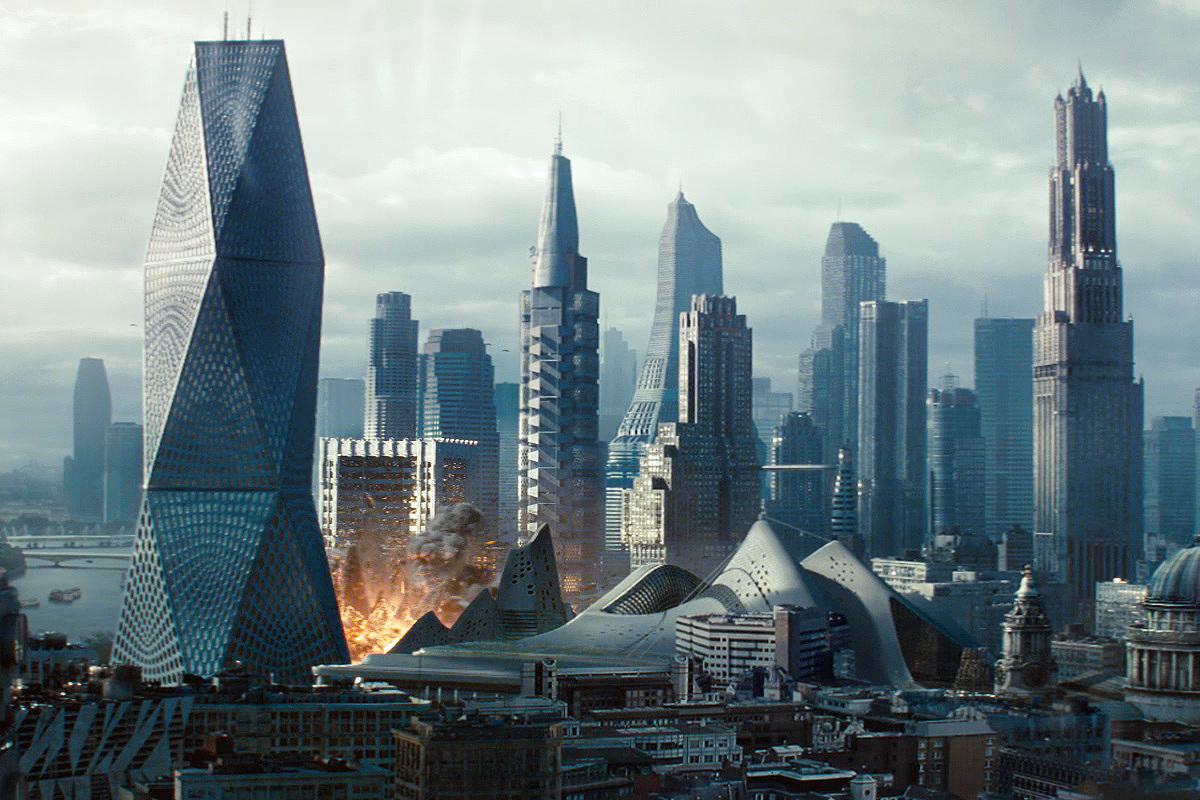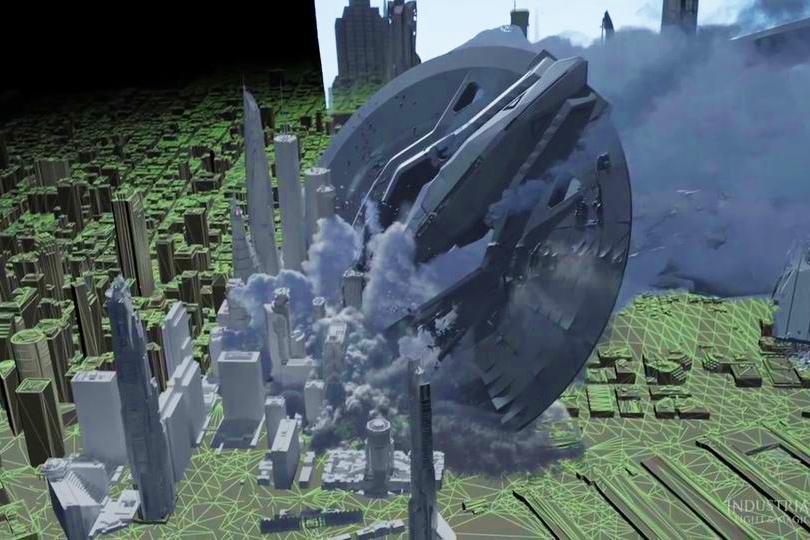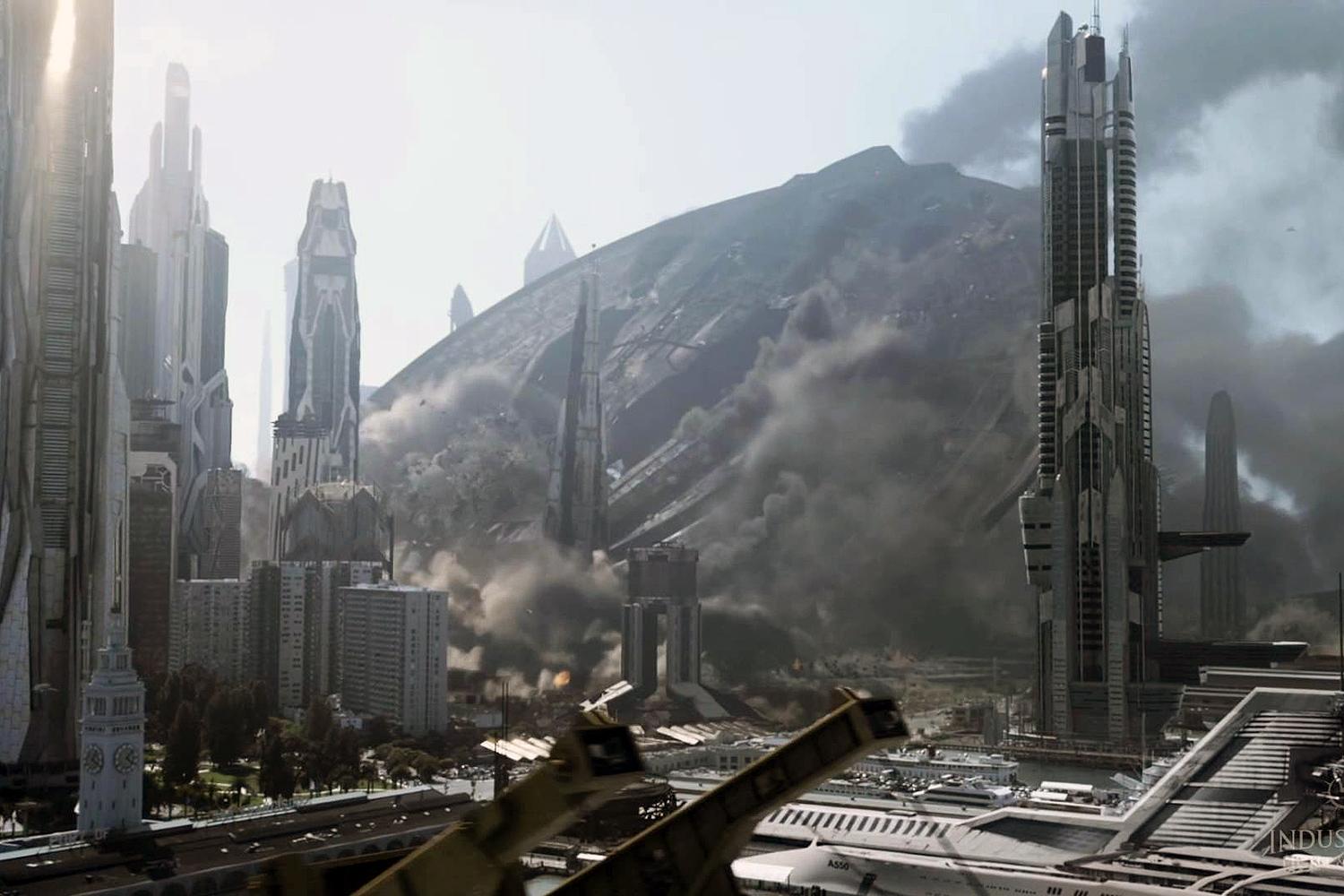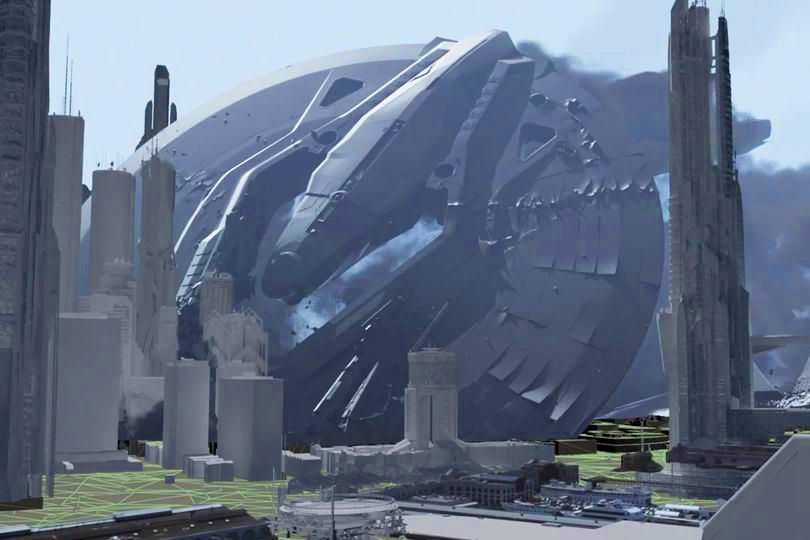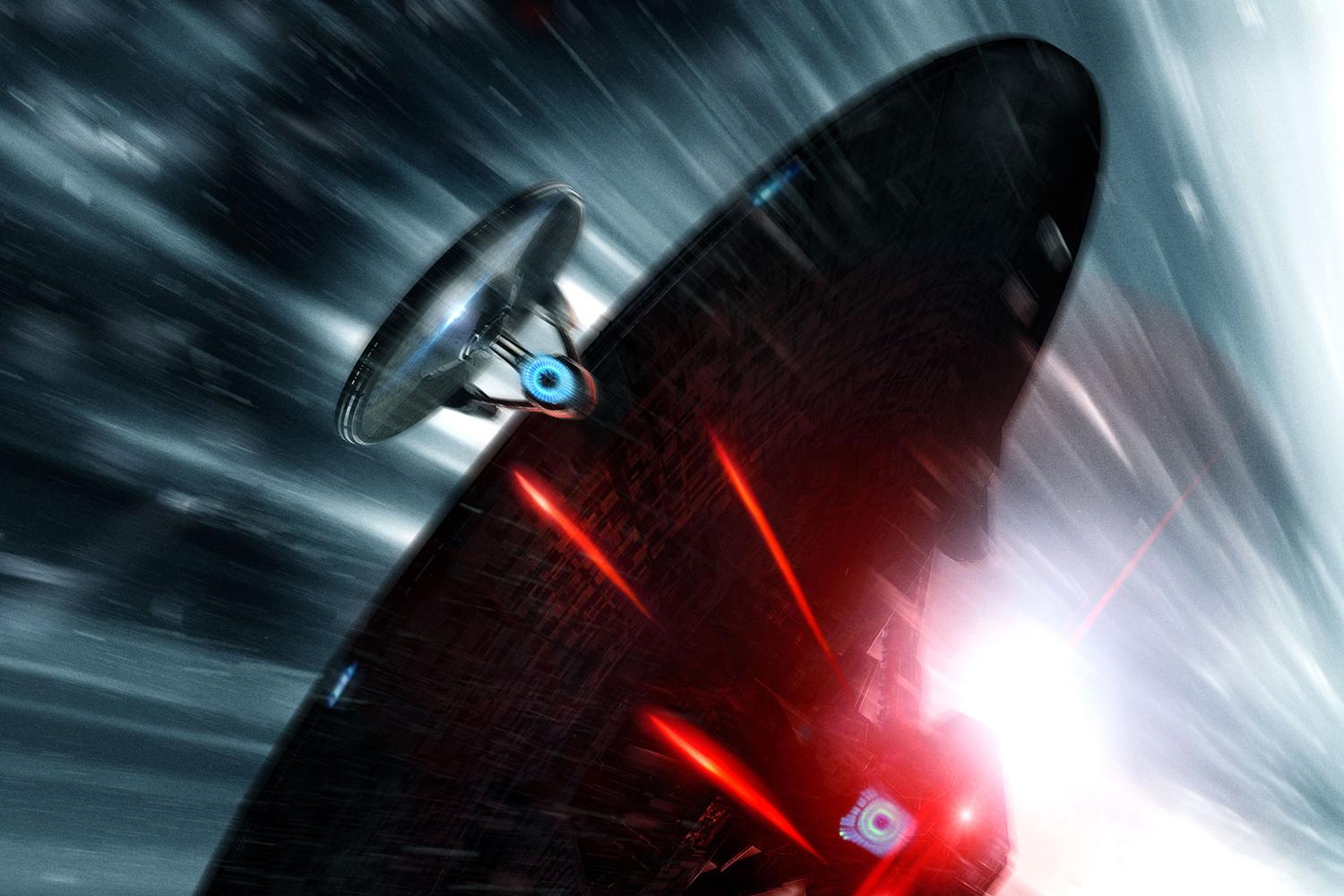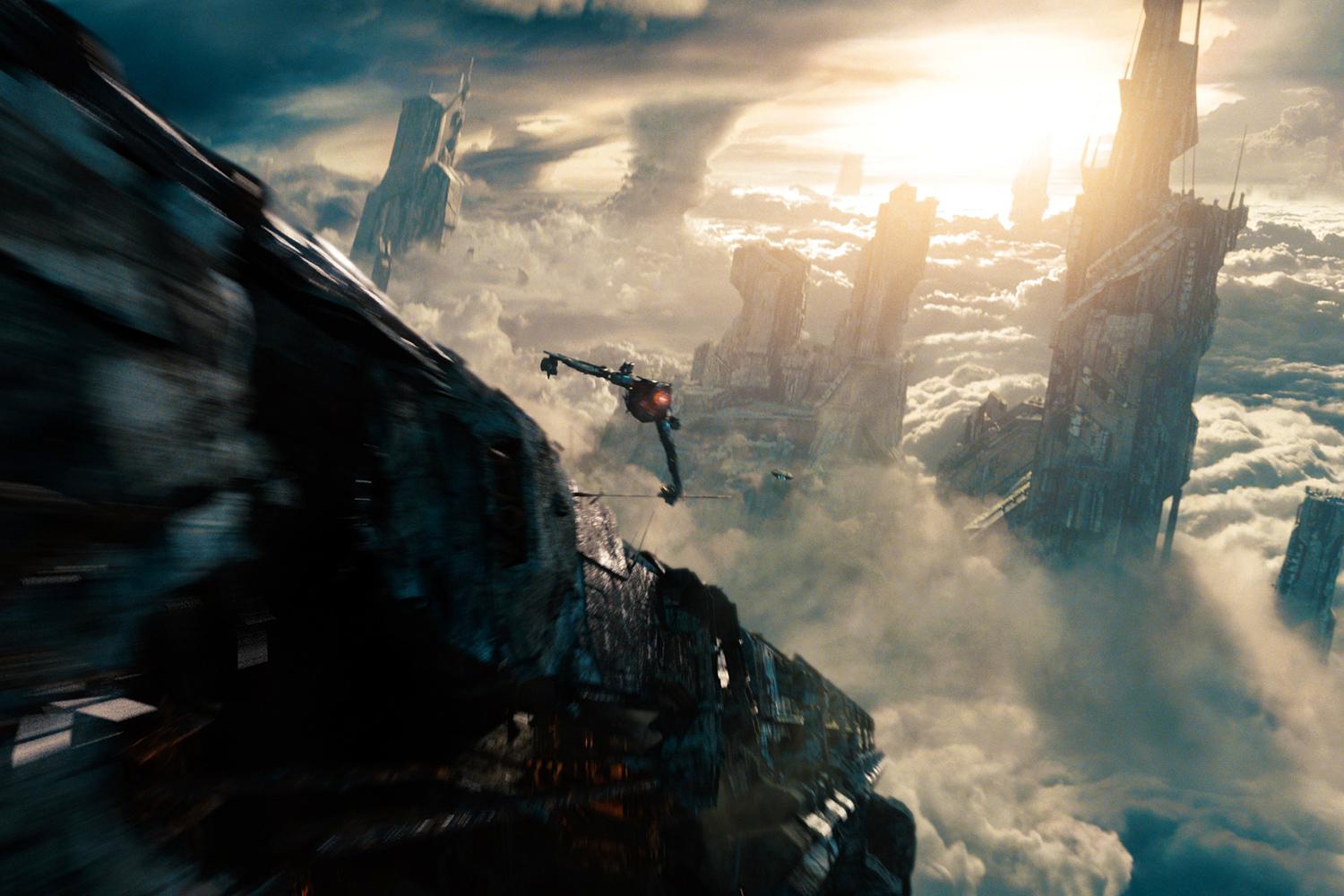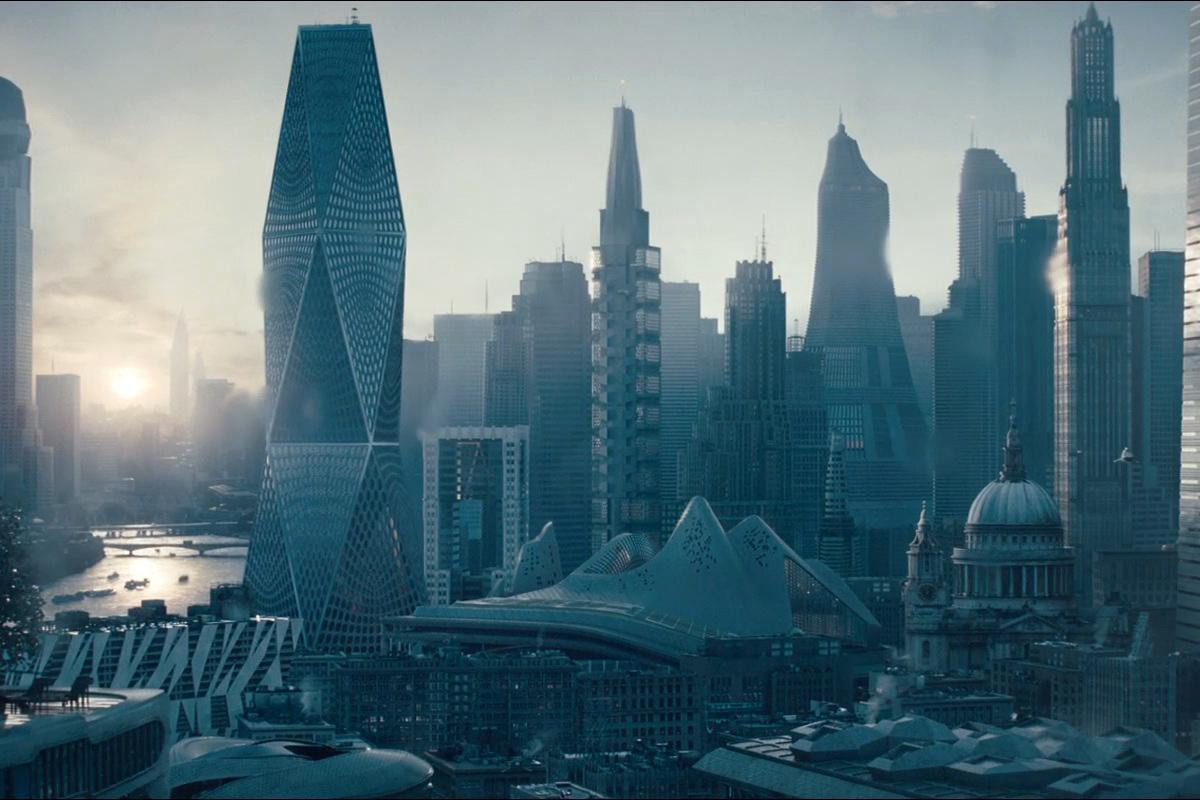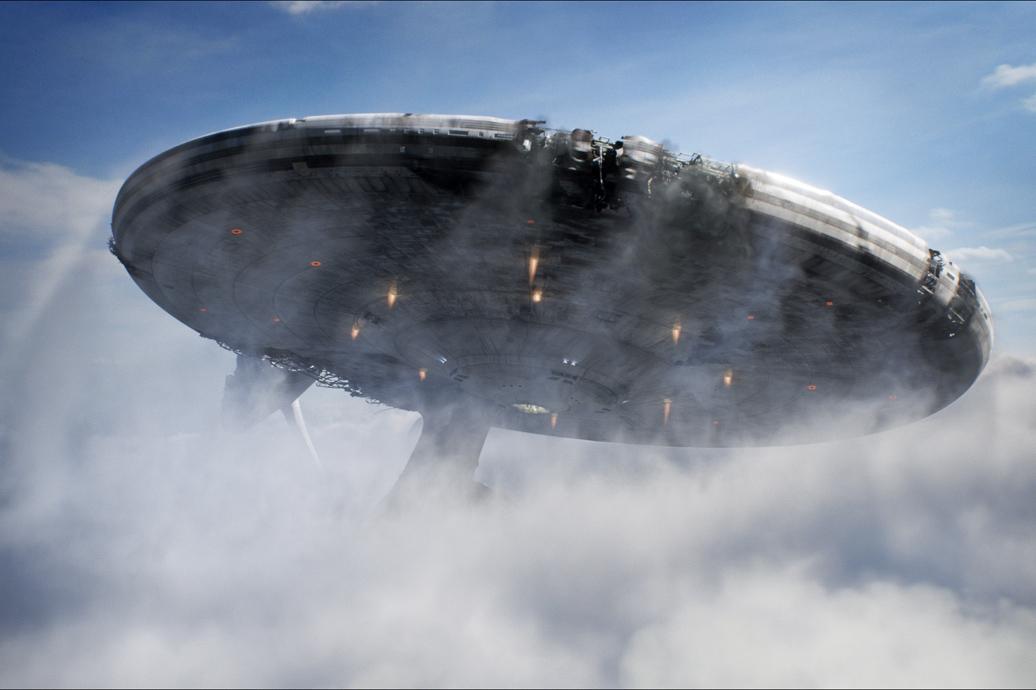Five films are nominated for an Academy Award in the “Visual Effects” category this year, and they each offer a nice look at the amazing tricks filmmakers and their effects teams can pull off on the big screen. In recognition of these five films and one of our favorite Oscar categories, we’re putting the spotlight on one “Visual Effects” nominee each day leading up to Sunday’s broadcast and taking a closer look at what made them stand out.
Previously, we explored the breathtaking visual magic of outer-space thriller Gravity, the technology that brought a dragon to life in The Hobbit: The Desolation of Smaug, the task of animating an army of automated suits of armor in Iron Man 3, and the trouble with trains in The Lone Ranger. Now we look at the process of building the San Francisco cityscape of 2259 for Star Trek Into Darkness, and the techniques used to bring it crashing to the ground in the film’s final act.
No one can accuse Star Trek Into Darkness director J.J. Abrams of skimping on impressive visuals in last year’s sequel to 2009’s franchise-rebooting Star Trek.
From the film’s very first act, which saw James T. Kirk and the crew of the U.S.S. Enterprise saving a colorful planet from destruction wrought by an overactive volcano, Abrams and the artists of visual effects studio Industrial Light and Magic offer up one fantastic sequence after another that takes the well-known cast of characters from one end of the universe to another. And when they bring the action back to Earth for the film’s explosive finale, the result is a memorable sequence that features a massive starship crashing into downtown San Francisco, reducing large portions of the futuristic city to rubble.
“We wanted to make that feel incredibly dramatic and give the city a real personality, but also make it feel as real as it could”
“It was an enormous undertaking to create all of the architecture in the background and avoid that Flintstones thing of the same building passing by,” said ILM’s visual effects supervisor Roger Guyett in a behind-the-scenes featurette released earlier this year. “We wanted to make that feel incredibly dramatic and give the city a real personality, but also make it feel as real as it could. I didn’t want to create a future San Francisco that felt almost too conceptual, or shoot in a Los Angeles street and try to turn it into a future version of itself.”
Not content to simply build a Jetsons-style city in the clouds and call it a day, the ILM team designed the San Francisco of 2259 using a mix of urban planning and architectural theory, as well as a healthy dose of forward-thinking. A few local landmarks – like the Transamerica Pyramid – were also included to keep everything rooted in (potential) reality and provide some frame of reference for the scale of the city’s growth over the next two centuries.
It was particularly tricky, according to ILM’s co-visual effects supervisor Pat Tubach, to predict how advancements like flying cars would affect the city and the layout of the landscape and architecture.

“To design a future San Francisco was a real challenge,” he said. “One thing that would always change a city dramatically is if you have flying vehicles. You’re going to need ways of entering buildings, you’re going to need different pathways and different mechanisms for how the city functions.”
Speaking to FX Guide, Tubach – a San Francisco resident himself – called the project “a big thrill” for both himself and his local colleagues.
“We’re not just throwing future-tech at something for the sake of doing that, but building the city in a believable way,” he explained. “So this is a city that you recognize and this is a city people live in, and it hasn’t gone so far off the deep end in terms of technology that you can’t believe that this is something that can actually exist.”
The ILM team designed the San Francisco of 2259 using a mix of urban planning and architectural theory.
“[The surrounding city] is essentially full 3-D, no cheating at all,” he said of the urban landscape that whizzes by during Spock’s climactic brawl with John Harrison. “[It’s] modeled, textured, everything in that environment.”
The level of detail put into the city made its destruction in the last act of the film that much more devastating, and raised the level of difficulty for the film’s grand finale.
In one of the final major sequences in the film (Spoiler Alert!), the massive U.S.S. Vengeance comes hurtling out of the space on a collision course with Starfleet Headquarters, giving John Harrison one final chance for vengeance on the organization that he believes has wronged him. The black ship manages to take out a chunk of Alcatraz Island just before it makes impact with the city, and the ship’s momentum carries it further, bulldozing skyscrapers and countless other buildings as it skids to a halt.
The destruction in the scene is, put it mildly, pretty intense – and the creating the scene may have been even more so.
“The Vengeance crashes into the ground and we had to simulate that,” explained Karin Cooper, ILM’s CG creature supervisor. “That affects the buildings, so then we have some hero buildings that are set up that the eye gets automatically drawn to, so we simmed those, and then there are all these little buildings we have to sim, and all the debris coming off the dish…”
“There are shots where there are maybe 50 or 60 sim elements,” said compositing supervisor Jay Cooper in a May 2013 interview. “It’s obviously computationally heavy to run those, and even more computationally heavy to run them together, so what you end up having to do is take different pieces of sims and takes and put them altogether.”
It takes a special kind of ship to cause that much chaos.
“When the dish [from the U.S.S. Vengeance] crashes into the city it had to make many types of shapes, bending and twisting, and there was a lot of really great simulation from our creature-dev department of it actually bowing,” recalled Bruce Holcomb, ILM’s CG model supervisor. “The flagship was a large sum of data. I think some of the files were around 2Gb, and that’s just the models alone before we even got paint on them.”
The final product of their efforts was an epic, intense sequence that spanned only a short period in the film, but had a lasting effect on both the futuristic version of San Francisco and ILM’s approach to handling these types of sequences in future projects. After all, when it comes to disaster scenes, the more epic the destruction, the greater the testament to the creative talents of the team involved.
(Images © Paramount Pictures)
Check out our coverage of the other nominees
Editors' Recommendations
- Fall Guys adds Star Trek, Aliens, and Hatsune Miku in its new season
- 10 mistakes the Oscars will never live down
- How VFX brought Leia back, gave us Star Wars: Rise of Skywalker’s best battle

